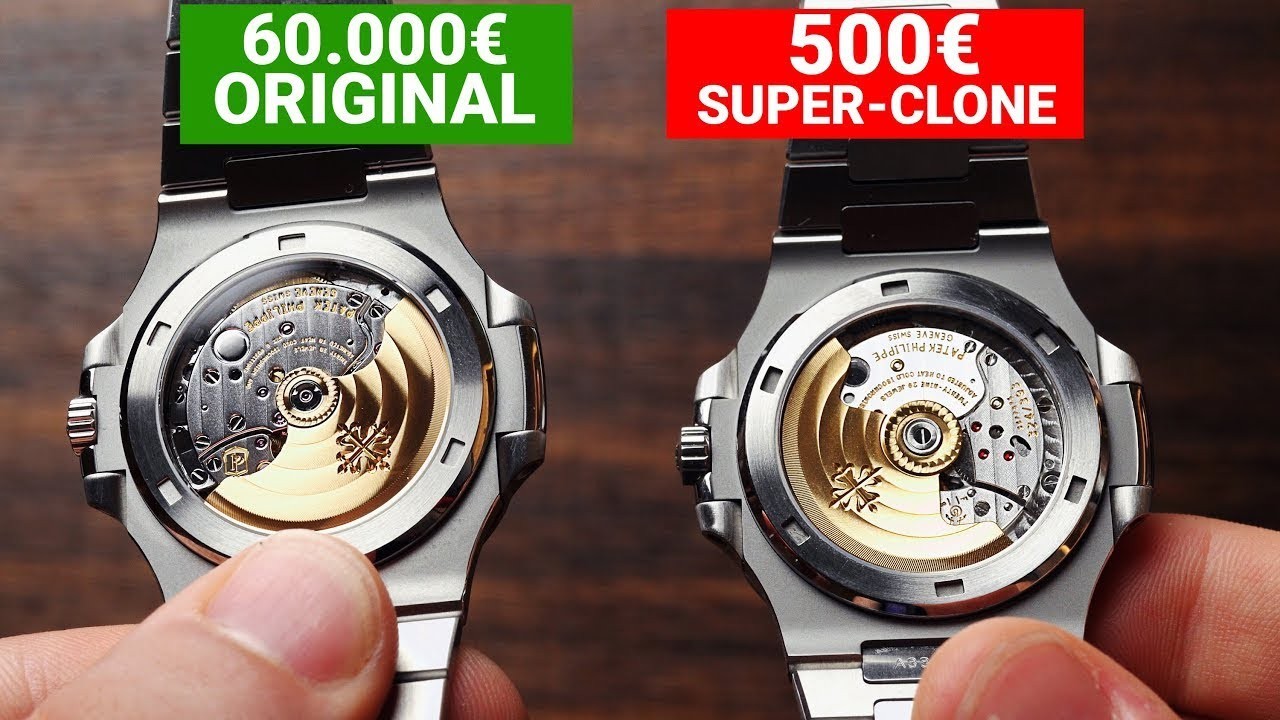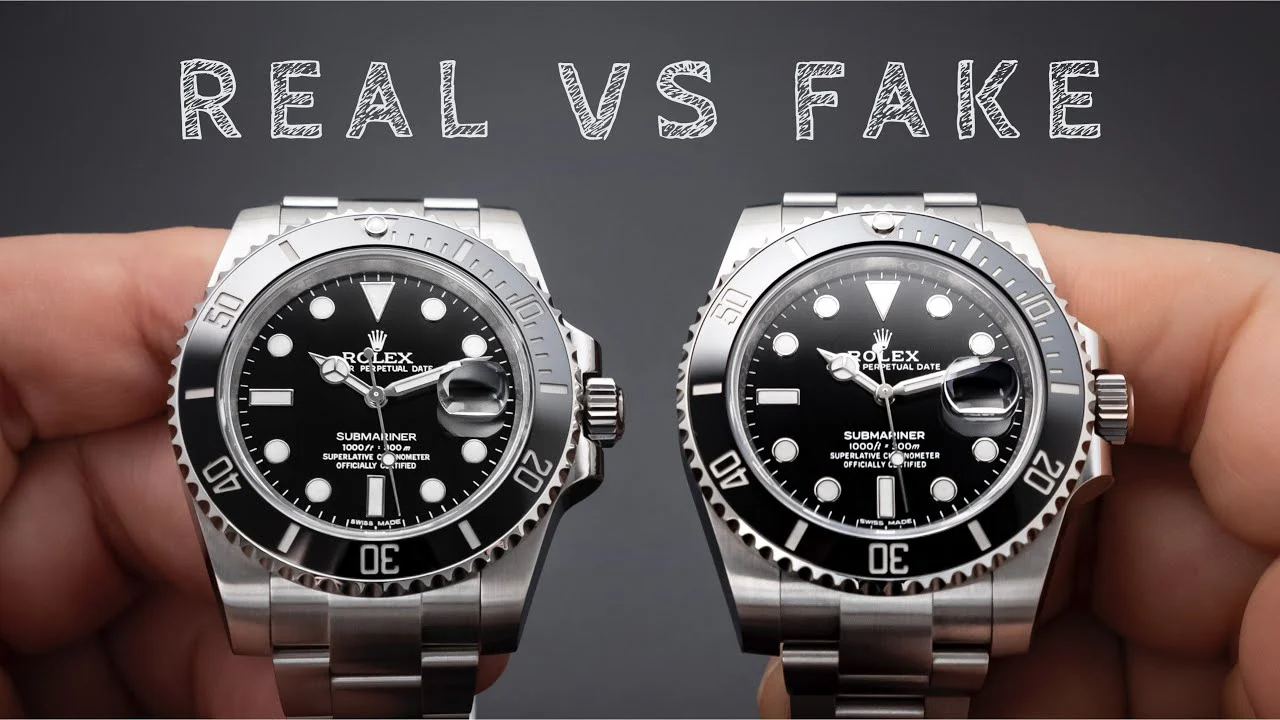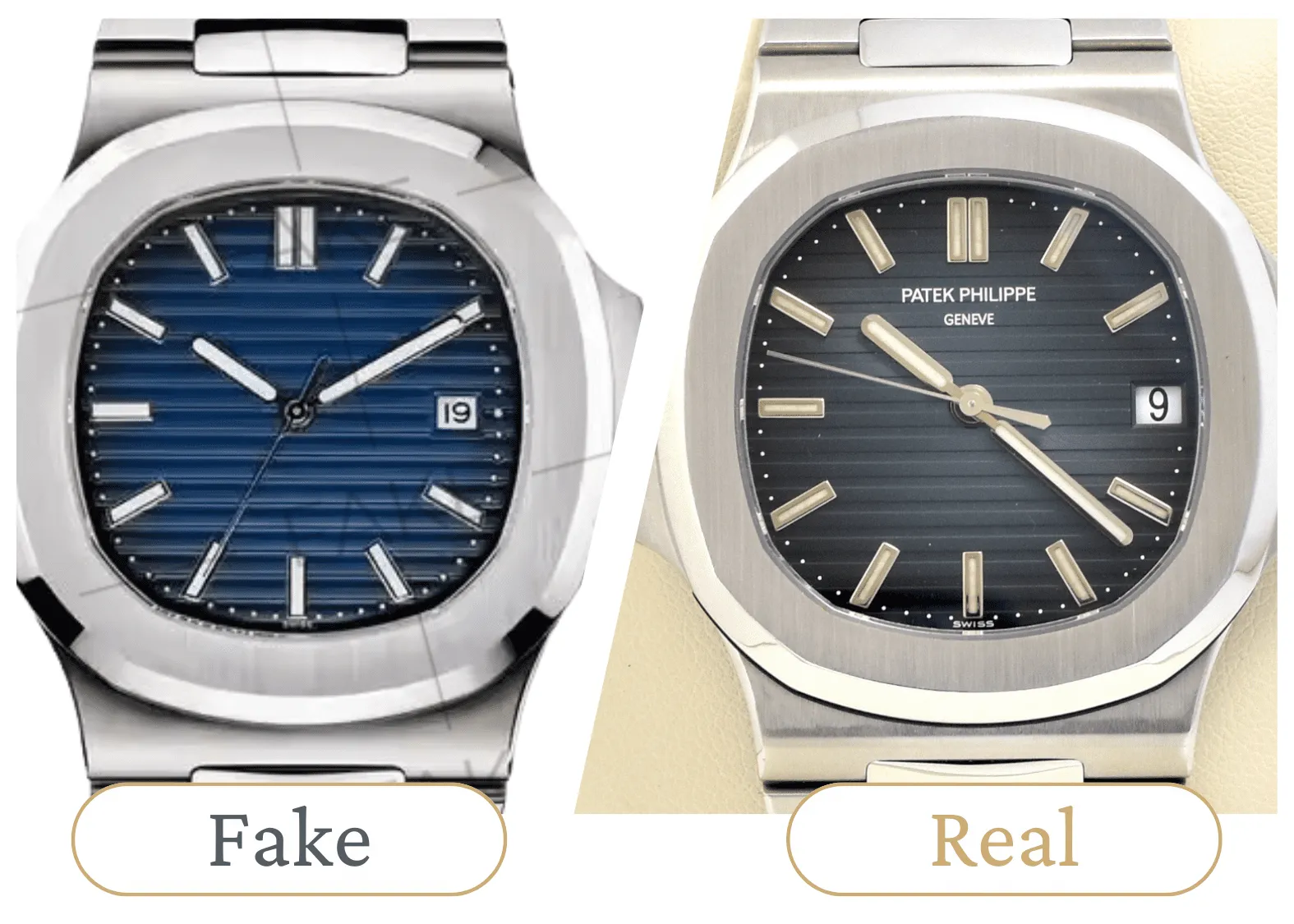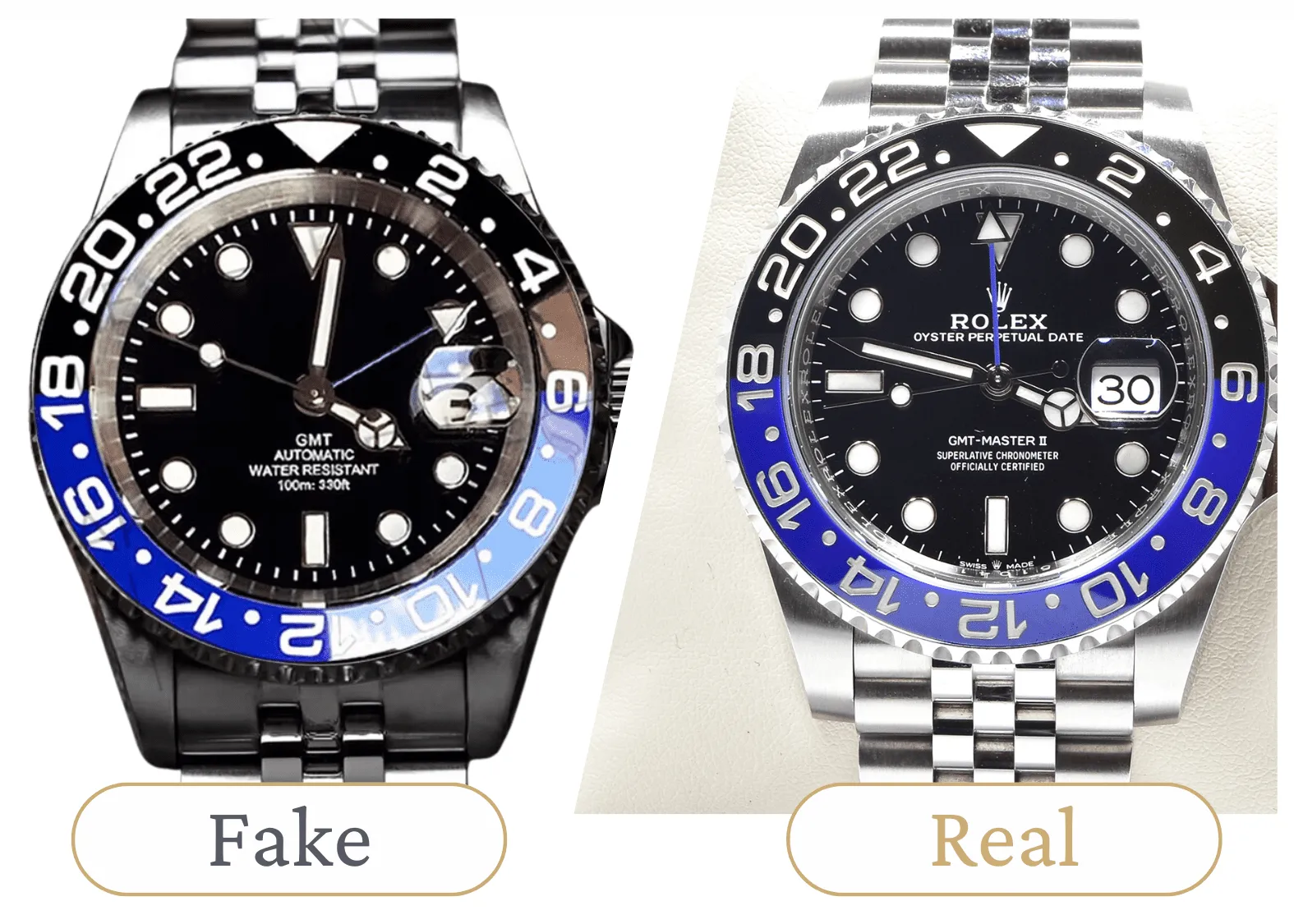Difference Between Fake and Replica Watches
Difference Between Fake and Replica Watches
The luxury watch market has long been plagued by a myriad of imitations designed to deceive unsuspecting buyers. Navigating the intricate landscape of watches is no small feat, especially when considering the differences between fake and replica watches. While both types serve as alternatives to authentic luxury timepieces, their quality, craftsmanship, and intentions vary significantly. This article delves into the nuances that set fake watches apart from replicas, equipping you with the knowledge necessary to make informed purchasing decisions.
Characteristics of Fake Watches
When it comes to fake watches, certain outstanding characteristics define them. These timepieces are generally designed to impersonate renowned luxury brands without delivering on quality or authenticity. Unlike their authentic counterparts, fake watches can mislead buyers through deceptive branding but ultimately fall short in terms of materials and craftsmanship.

Quality and Craftsmanship in Fake Watches
Fake watches, often termed counterfeit, are typically characterized by inferior quality and sloppy craftsmanship. The meticulous attention typically associated with authentic luxury timepieces is glaringly absent in fakes. A closer look reveals several key aspects that highlight the poor workmanship common in these dishonest reproductions:
- Construction Quality:
- Fake watches often lack the attention to detail seen in luxury models. Engravings may be off-center, fonts can differ from brand standards, and overall finishing is subpar.
- Movement:
- Many counterfeit watches employ cheap quartz movements that produce a jerky motion, unlike the smooth sweep of authentic luxury timepieces.
- Durability:
- Fake watches are often less durable due to cheaper materials, meaning they are more prone to wear and tear. Components may wear out quickly, leading to malfunctions, unlike genuine luxury watches designed to last generations.
| Features | Authentic Watches | Fake Watches |
|---|---|---|
| Craftsmanship | High-level detailing, precision | Poorly made, imprecise |
| Movement | Automatic or high-quality quartz | Cheap quartz movements |
| Durability | Long-lasting materials | Prone to breakdowns |
Common Materials Used in Fake Watches
The construction of fake watches typically involves low-quality materials. Unlike genuine luxury watches made with high-grade materials, fakes often utilize the following:
- Base Metals:
- Instead of stainless steel, many fake watches are made from cheaper alloys that can easily corrode or tarnish over time.
- Mineral Crystal:
- Fake watches often feature mineral crystal, which scratches easily compared to the sapphire crystals used in authentic pieces.
- Plated Finishes:
- Instead of solid metal, many counterfeits are finished with a layer of plating that wears off with time, revealing inferior materials underneath.
- Synthetic Straps:
- Fakes usually come equipped with low-grade synthetic materials, making them less comfortable and durable than genuine leather or higher quality alternatives.
Characteristics of Replica Watches
While fake watches strive for deception, replica watches aim to imitate authentic brands without directly claiming to be genuine. They are often crafted with better materials and greater attention to detail. This distinction is critical when determining the quality and overall value of a timepiece.
Quality and Craftsmanship in Replica Watches
Unlike fake watches, replicas are typically crafted with far greater attention to quality and craftsmanship. Here are the noteworthy aspects found in quality replicas:
- Skilled Craftsmanship:
- Many high-quality replicas reflect an effort to closely mimic the timepiece they replicate. From precise movements to exceptional finishing techniques, skilled artisans often take part in the crafting process.
- Material Choice:
- Replicas often utilize stainless steel, genuine leather, or high-quality ceramic, contrasting sharply with the inferior materials utilized in fakes.
- Movement Precision:
- They tend to feature intricate movements, either real mechanical movements or high-end quartz options, that imitate the functionality of the originals.
| Feature | Authentic Watches | Replica Watches |
|---|---|---|
| Craftsmanship | Flawless detailing | High-quality imitation |
| Material Quality | Premium construction | Good materials, lesser than authentic |
| Movement Type | Automatic or high-range quartz | High-quality quartz |
Common Materials Used in Replica Watches
In the world of replica watches, the materials employed play a pivotal role in determining the watch’s quality and authenticity. Key materials include:
- Stainless Steel:
- Many high-quality replicas utilize 316L stainless steel, known for its durability and resistance to corrosion.
- Sapphire Crystal:
- Unlike fake watches, which use mineral crystals, high-quality replicas often feature sapphire crystal, providing better scratch resistance.
- Quality Straps:
- A well-crafted replica may include genuine leather or high-grade synthetic materials that provide comfort and durability.
Price Comparison Between Fake and Replica Watches
When evaluating the landscape of watches, understanding the price differences is crucial in distinguishing between fake and replica options. The costs involved in manufacturing and materials ultimately contribute to varying price points.

Cost Factors for Fake Watches
Fake watches are generally inexpensive, where cost-effective production and low-quality materials are significant contributors. The price range for these lower-end imitators can be broken down as follows:
- Low Production Costs:
- The materials used are often quite cheap, allowing manufacturers to turn a profit even at lower price points. Commonly ranging from $10 to $200, fake watches find their market by delivering an illusion rather than authenticity.
- Profit Margins:
- Despite their low price points, the profit margins for these counterfeit products are vast, leading to significant revenue for their manufacturers. As the production methods are mass-scale, it allows for vast quantities to enter the market while keeping costs minimal.
| Feature | Fake Watches | Replica Watches |
|---|---|---|
| Price Range | $10 – $200 | $100 – $500 and beyond |
| Material Costs | Very low | Moderate to high quality |
| Profit Margins | Greatly inflated | Moderate margins, yet less than fakes |
Cost Factors for Replica Watches
In contrast, replicas can incur higher costs due to better materials and manufacturing practices. Their pricing often falls into the following categories:
- Quality Materials Implementation:
- Replicas typically use high-grade stainless steel and sapphire glass, which increases production costs but ultimately leads to a more authentic appearance. Costs typically range from $100 to $500 for lower-tier replicas and often exceeding $1,000 for premium versions.
- Manufacturing Practices:
- The production of replicas often requires skilled workers and more sophisticated manufacturing methods, hence increasing the overall cost. This commitment to quality renders them a more appealing option for consumers seeking authenticity without the hefty price tag associated with original luxury watches.
Brand Recognition and Value
The ramifications of brand recognition play an essential role in distinguishing fake and replica watches. This perception can influence a buyer’s choice significantly, especially concerning the status that accompanies a timepiece.

Brand Association with Fake Watches
Fake watches are often produced to mislead consumers into believing they are purchasing authentic luxury products. This deception not only harms the reputation of established brands but can also erode consumer trust. Notable impacts include:
- Misleading Branding:
- Many counterfeit watches display brand logos and designs illegally, thus infringing upon intellectual property rights. This association misguides consumers who may not realize they are purchasing a counterfeit item.
- Brand Value Dilution:
- The proliferation of fake watches in the market can diminish the perceived value of the actual brand, especially if counterfeit items are poorly made yet marketed aggressively.
Brand Association with Replica Watches
In contrast, replica watches are designed to emulate luxury timepieces without asserting authenticity. This approach yields a different type of brand association, presenting both benefits and drawbacks:
- Legal Boundaries:
- Replicas generally do not attempt to pass themselves off as authentic products and therefore navigate legal waters more cautiously. They typically don’t misrepresent themselves and allow consumers to enjoy certain features associated with luxury items without the legal implications of purchasing fakes.
- Aesthetic Appreciation:
- Buyers often select replicas based on their aesthetic appeal, as many offer craftsmanship that mirrors authentic luxury timepieces. This appeal allows customers to showcase their style while avoiding the higher costs associated with original pieces.

Legal Implications
Understanding the legal ramifications surrounding fake and replica watches is crucial for consumers. The intentions behind each product significantly alter their legal standing and potential consequences for buyers.
Copyright and Trademark Issues with Fake Watches
The legal complications surrounding fake watches predominantly stem from copyright and trademark issues. These counterfeit items typically infringe upon established brand rights, resulting in significant ramifications including:
- Trademark Infringement:
- The unauthorized use of brand names, logos, and designs can expose counterfeit watch makers to lawsuits from established brands. The risks posed to consumers buying these products include potential legal action if they unknowingly purchase or distribute these infringing items.
- Financial Liabilities:
- Engaging in the production or sale of counterfeit goods can lead to steep penalties, encompassing both civil and criminal charges depending on the scale of the counterfeit operation involved.
Copyright and Trademark Issues with Replica Watches
In contrast, replica watches maneuver through the legal landscape with fewer complications. As these products aim to mimic existing designs without positing themselves as originals, they often tread more lightly in legal matters:
- Legal Gray Areas:
- The legality of producing replicas often hinges on how they are marketed. Replicas that clarify their non-authentic nature are unlikely to face the same trademark disputes as their counterfeit counterparts.
- Limited Liabilities:
- Buyers of replica watches usually do not face substantial legal repercussions, provided they purchase from reputable sellers that comply with laws regarding intellectual property.

Market Trends
Today, the popularity of both fake and replica watches reveals critical trends within the luxury watch market, presenting unique challenges and opportunities for consumers.
Popularity of Fake Watches in the Market
The counterfeit watch market has gained substantial traction, especially given the growing demand for affordable luxury. Some statistics highlight this trend:
- Global Reach:
- It is estimated that millions of fake watches circulate globally, with a significant share falling into recognizable brands like Rolex. These products appeal to consumers seeking luxury aesthetics without the associated costs.
- Consumer Deception:
- Research indicates that about 10% of American consumers have unknowingly purchased counterfeit watches, illustrating the substantial penetration of fake models in the market.
Popularity of Replica Watches in the Market
Conversely, the replica watch market is witnessing considerable growth, particularly where “super clone” replicas are concerned:
- Craftsmanship Improvement:
- High-quality replicas utilize better materials and technology, resulting in watches that closely resemble their authentic counterparts. The cost of premium replicas often reflects their superior craftsmanship and increased functionality.
- Market Projections:
- Estimates predict that by 2025, the replica market could reach $15 billion, highlighting consumer interest in owning luxury-like timepieces at a fraction of the price.
Authenticity Verification
With the increasing sophistication of fake and replica watches, verifying authenticity is essential for potential buyers. Here’s how to tell the difference effectively.
Methods to Identify Fake Watches
To distinguish fake watches from authentic ones, consider the following methods:
- Visual Inspection:
- Look for uneven spacing in the logo and fonts, misalignments, or poor-quality engravings.
- Weight Check:
- Genuine luxury watches have substantial weight due to high-quality materials, while fakes often feel light and insubstantial.
- Movement Analysis:
- Authentic luxury watches boast smooth, sweeping second hands; fake watches often exhibit a ticking motion indicative of lower-quality movements.
- Documentation Verification:
- Check for unique serial numbers that match manufacturer records. Counterfeit watches may lack proper documentation.
Methods to Identify Replica Watches
Identifying quality replicas also involves attention to detail. Here are key methods:
- Visual Details:
- Examine engravings and logos for precision. Replicas typically exhibit higher standards in detailing than fakes.
- Weight Assessment:
- Compare the weight to authentic models. While high-quality replicas will be substantial, lower-grade replicas may lack weight.
- Movement Quality:
- Observe the movement of the second hand; a smooth sweep denotes higher quality, contrasting with the ticking motion of cheaper options.
- Documentation and Provenance:
- Reputable replicas should include genuine packaging and documentation. Lack of this can be a significant red flag.

Resale Value
Understanding resale value is critical when considering both fake and replica watches. The worth of these watches varies significantly, impacting enthusiast decisions.
Resale Market for Fake Watches
The resale potential for fake watches is nearly nonexistent due to their illegitimate nature. Key factors influencing their value include:
- Low Demand:
- Given their known inferior quality and legal implications, fake watches generally command extremely low resale values, often only 10-20% of the original retail price if sold.
- Skepticism from Buyers:
- Buyers are often cautious of purchasing fake watches, leading to poor demand in resale markets and plummeting values for counterfeit items.
Resale Market for Replica Watches
In contrast, the resale market for replica watches can be more promising. Aspects influencing resale values include:
- Style and Quality:
- Well-crafted replicas may hold resale values up to 30-50% of their original price depending on how well they are marketed and their perceived quality.
- Brand Perception:
- A positive reputation can increase demand in resale markets, leading to better outcomes for replica sellers.
Conclusion: Choosing Between Fake and Replica Watches
Ultimately, the decision to purchase a fake or replica watch hinges upon various personal priorities, such as quality, legality, brand desirability, and ethical considerations. The key is a clear understanding of the disparities between the two options.
Factors to Consider Before Purchase
When contemplating a watch purchase, consider these factors:
- Intended Use:
- Determine if the watch is for everyday wear, collecting, or gifting. Different uses may justify varying quality levels.
- Legal and Ethical Implications:
- Recognize that purchasing or possessing fake watches can involve serious legal repercussions, while replicas typically do not carry the same risks.
- Investment Potential:
- Higher-quality replicas might allow for better resale opportunities than fakes, making them more suitable for collectors or investors.
- Personal Style:
- Consider how the watch reflects your personal style and needs, ensuring that the chosen option complements your aesthetics while meeting quality expectations.
Recommendations for Buyers
When navigating the world of fake and replica watches, consider the following:
- Research Thoroughly:
- Understand the differences and implications of each type before making a purchase.
- Purchase from Reputable Sellers:
- A trusted seller can provide necessary documentation and reviews to help verify authenticity and quality.
- Inspect Watches Carefully:
- Be diligent about visually inspecting and assessing the watch’s quality features before committing.
- Know Your Rights:
- Familiarize yourself with laws surrounding these watches in your region to avoid potential pitfalls in your purchase journeys.
FAQs
- What is the main difference between fake and replica watches?
- Fake watches aim to impersonate authentic luxury watches falsely, while replica watches imitate their design without claiming to be genuine.
- Are fake watches legal to buy and sell?
- Selling and buying fake watches can lead to legal problems due to trademark infringement, whereas replicas typically do not carry the same risks if marketed correctly.
- How can I identify a fake watch?
- Look for inconsistencies in the watch’s craftsmanship, weight, movement, and documentation to spot discrepancies indicative of counterfeit products.
- Is it worth buying a replica watch?
- Depending on your budget and desired aesthetics, a well-crafted replica can serve as a reasonable alternative to an authentic luxury watch without breaking the bank.
- Do fake watches have any resale value?
- Generally, fake watches hold little to no resale value, often fetching only 10-20% of their original price due to their inferior quality and legal concerns.
Key Takeaways
- Differentiating between fake and replica watches can significantly affect buyer satisfaction and legal standing.
- Quality and craftsmanship vary widely between fakes and replicas, impacting their durability and long-term value.
- Purchasing from reputable sellers can reduce the likelihood of buying counterfeit products.
- Understanding legal implications can protect you from potential legal ramifications associated with counterfeit items.
- Regularly inspecting and researching watches can lead to informed purchasing decisions.
In conclusion, distinguishing between fake and replica watches is vital for consumers seeking value, quality, and authenticity. As the market evolves with an influx of imitations, being knowledgeable about these differences can significantly impact your purchasing decisions. High-quality replicas may serve as viable alternatives to genuine luxury pieces, offering aesthetic appeal without the steep price tag. Meanwhile, understanding the legal implications surrounding fakes can safeguard buyers from potential pitfalls. Prioritize quality, craftsmanship, and ethical considerations when investing in timepieces to ensure satisfaction and longevity in your collection.
Common Keywords:
- Fake vs. replica watches
- Quality of replica watches
- Features of fake watches
- Brand value in watches
- Legal issues with watches

